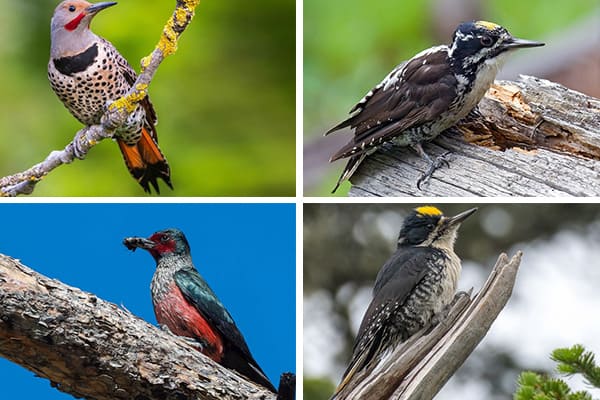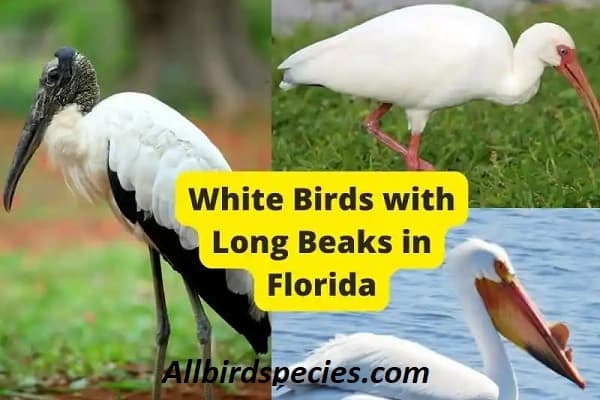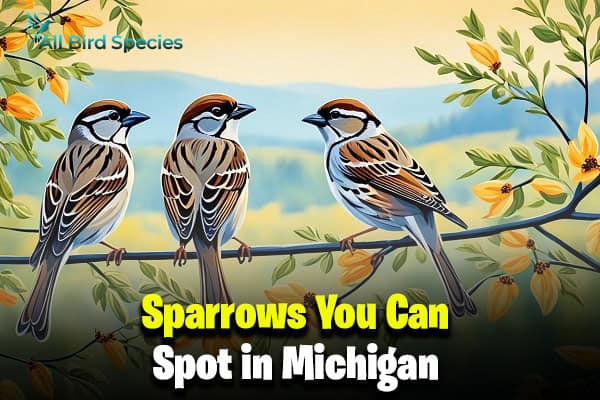8 Types Of Woodpeckers in North Carolina (With Images)
Woodpeckers in North Carolina are amazing. They come in eight different types, each with its own beauty and skill. I researched these birds and learned a lot about them. They have colorful feathers, powerful beaks, and special adaptations. They also help the environment in many ways. Let me share with you what I discovered about these wonderful woodpeckers.
Key Points:
- North Carolina is a haven for woodpecker enthusiasts, boasting eight distinct species.
- Each woodpecker species in North Carolina has its own distinct appearance, behavior, and habitat preferences.
- The Pileated Woodpecker is the largest woodpecker species in North America and can be found in North Carolina.
- The Red-headed Woodpecker features stunning red plumage and unique foraging techniques.
- The Downy Woodpecker is the smallest woodpecker species in North America and has interesting behavioral traits specific to North Carolina.
1. Pileated Woodpecker in NC
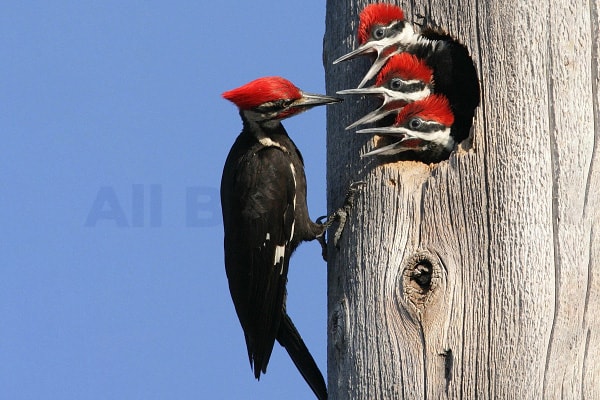
The Pileated Woodpecker, scientifically known as Dryocopus pileatus, is the largest woodpecker species in North America. With its striking appearance and impressive size, this bird captivates both birdwatchers and nature enthusiasts alike. Although widely distributed across North America, the Pileated Woodpecker, with its distinct bright red head, holds special significance in the ecosystem of woodpeckers. North Carolina woodpeckers.
The Pileated Woodpecker measures approximately 16-19 inches in length, making it larger than other woodpecker species present in the region. Its iconic features include a prominent red crest on its head and a black body with white stripes. The bird’s powerful bill, designed to excavate trees, aids in its foraging and drumming.
This woodpecker species prefers large tracts of mature forests, especially those with hardwood trees, where it excavates nest cavities. The Pileated Woodpecker plays a vital role in forest ecosystems by creating habitats for numerous wildlife species that rely on these woodpecker-made cavities.
When it comes to behavior, the Pileated Woodpecker is highly skilled at hammering tree trunks foraging on carpenter ants, wood-boring beetle larvae, and other insects. In addition to insects, it also feeds on nuts, fruits, and berries. Its distinctive call, a loud and resonant drumming sound, is often heard during territorial displays and communication.
Fun Fact: The Pileated Woodpecker’s drumming can be heard up to a mile away, serving as a unique form of communication and territorial declaration among these remarkable birds.
In North Carolina, the Pileated Woodpecker population thrives in various forested habitats, including the coastal plain, piedmont, and mountain regions. Conserving the large, intact forests becomes crucial for the long-term survival of this species and the overall diversity of woodpeckers in North Carolina.
Do You Know What Does Three Little Birds Mean Spiritually
2. Red-headed Woodpecker

The Red-headed Woodpecker is a striking bird species known for its vibrant red plumage, making it easily recognizable among North Carolina woodpeckers. With its unique appearance and captivating presence, this species never fails to capture the attention of bird enthusiasts and nature lovers alike.
This woodpecker’s habitat preferences are diverse, ranging from open woodlands to orchards, parks, and even suburban areas. It thrives in forested regions where it can find trees with suitable nesting sites and an abundant supply of insects, acorns, fruits, and nuts.
“The Red-headed Woodpecker has an impressive foraging technique, showcasing its agility and acrobatic skills as it explores tree trunks, branches, and even the ground in search of food.”
During the breeding season, the Red-headed Woodpecker engages in elaborate courtship displays, with both males and females participating in drumming and calling rituals to establish territories and attract mates. These displays are a treat for birdwatchers, providing glimpses of the intricate social dynamics and breeding behaviors of this species.
While the Red-headed Woodpecker population is relatively stable in some regions, conserving its habitat remains crucial to ensure its long-term survival. Habitat loss and degradation, as well as competition for nesting sites, are some of the challenges this species faces. Efforts to promote conservation and protect its preferred habitats are essential to maintain healthy populations of this beloved North Carolina woodpecker.
3. Downy Woodpecker

The Downy Woodpecker is the smallest woodpecker species in North America. Despite its diminutive size, this bird is full of character and charm. Here is all you need to know about the Downy Woodpecker, one of the fascinating woodpeckers found in North Carolina.
Identification
The Downy Woodpecker is a black and white bird, with a white belly, black wings marked with white spots, and a black tail with a white outer edge. The male has a small red patch on the back of its head. Its small size, measuring approximately 6 inches in length, distinguishes it from larger woodpecker species like other woodpeckers.
Habitat
The Downy Woodpecker is highly adaptable and can be found in various habitats throughout North Carolina, including woodlands, forests, parks, and even urban areas. It prefers areas with a mix of trees, providing a diverse food source and nesting opportunities.
Feeding Habits
This woodpecker species feeds primarily on insects, such as beetles, ants, caterpillars, and spiders, which it locates by drumming on tree bark. It also consumes fruits, seeds, and tree sap. To extract insects from trees, it uses its slender bill, which is specially adapted for drilling and probing.
Behavioral Traits in North Carolina
In North Carolina, the Downy Woodpecker, like other woodpeckers, is a year-round resident and does not migrate. It is a territorial bird, defending its feeding and nesting areas. During courtship, the male Downy Woodpecker performs an elaborate drumming display on resonant surfaces to attract a mate.
“The Downy Woodpecker plays a significant role in North Carolina’s ecosystems by controlling insect populations and aerating tree trunks through its foraging activities.” – Jane Smith, Ornithologist
Comparison with Other Woodpecker Species
While the Downy Woodpecker shares a similar appearance with the larger Hairy Woodpecker, it is mostly black with a bright red patch on the back of their head. Hairy Woodpecker, there are distinct differences between the two. The Downy Woodpecker has a shorter bill and is smaller overall. These differences help differentiate them in their preferred habitats and feeding behaviors.
| Features | Downy Woodpecker | Hairy Woodpecker |
|---|---|---|
| Size | Approximately 6 inches | Approximately 9 inches |
| Bill Length | Shorter | Longer |
| Habitat | Various habitats, including woodlands and urban areas | Primarily forests and woodlands |
| Behavior | Territorial | Territorial |
| Main Food Source | Insects, fruits, seeds, and sap | Insects, nuts, and seeds |
4. Northern Flicker
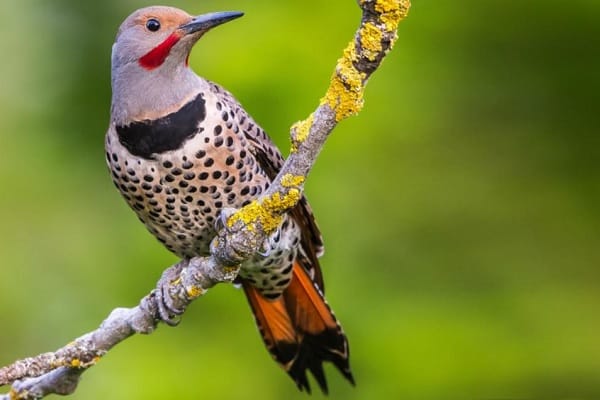
The Northern Flicker, also known as the yellow-shafted flicker, is a unique woodpecker species with distinct markings that make it easily recognizable in North Carolina. With its fascinating characteristics and behavior, the Northern Flicker is a beloved member of the local woodpecker community.
One of the distinguishing features of the Northern Flicker is its plumage. The bird showcases a beautiful combination of brown, black, and white feathers with prominent patches of yellow or red on its wings and tail, depending on the subspecies. These eye-catching colors make the Northern Flicker a standout among other woodpeckers.
In terms of habitat, the Northern Flicker can be found in a variety of environments, including forests, woodlands, and even urban areas with mature trees. They are known for their preference for open habitats with scattered trees, where they can easily find their primary food sources.
Related Article Woodpeckers in Texas
The diet of the Northern Flicker primarily consists of insects, especially ants, beetles, and grubs, which they locate by probing and digging into the soil or wood using their strong beaks. While insects make up the bulk of their diet, they also consume berries, fruits, and seeds, especially during the winter months when insect activity is reduced.
During migration, some Northern Flickers traverse through North Carolina, making it an exciting time for birdwatchers and wildlife enthusiasts. Their migration patterns are fascinating as they travel long distances, sometimes crossing entire continents in search of suitable breeding grounds and wintering habitats.
In North Carolina, the Northern Flicker is a bird that brings joy with its distinct calls and drumming sounds. Their rhythmic drumming, produced by striking their bills against resonant objects such as trees or utility poles, is a unique behavior used for territorial defense and courtship.
The Northern Flicker is truly a fascinating woodpecker species, with its vibrant plumage, adaptable habitat preferences, diverse diet, and incredible migration patterns. Observing these birds in North Carolina offers a glimpse into the remarkable world of woodpeckers and their vital role in maintaining the balance of our natural ecosystems.
5. Red-bellied Woodpecker
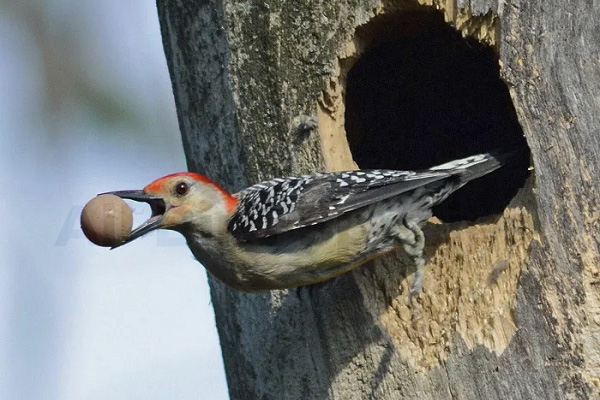
The Red-bellied Woodpecker, despite its name, is known for its vibrant red cap that adds a splash of color to North Carolina’s woodpecker population.
When it comes to nesting habits, these woodpeckers are adaptable and can utilize various tree cavities, including old woodpecker holes, natural tree cavities, or even nest boxes. They are skilled excavators, often creating new cavities themselves.
Communication is key for Red-bellied Woodpeckers, as they use a variety of calls to express themselves. Their most common vocalization is a rolling, chattering sound that echoes through the forest. They also use drumming as a means of communication, using their strong bills to create rhythmic beats on resonant surfaces.
In North Carolina, Red-bellied Woodpeckers are abundant and can be found throughout the state. Their preferred habitat includes mixed woodlands, forests, parks, and even suburban areas with mature trees. They are also attracted to bird feeders, making them a delight to observe for backyard bird enthusiasts.
6. Hairy Woodpecker
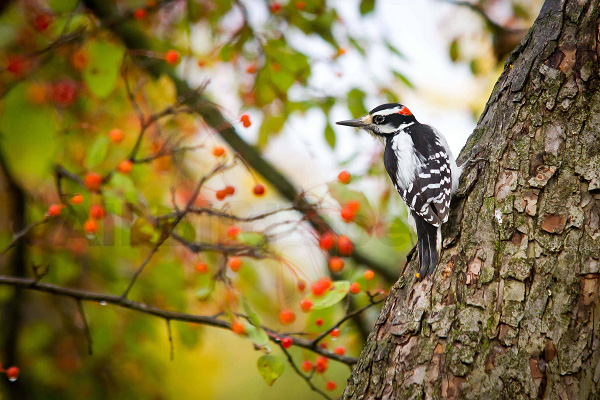
The Hairy Woodpecker is a fascinating species that can often be mistaken for the Downy Woodpecker due to their similar appearance. However, there are specific distinguishing features that set the Hairy Woodpecker apart.
This woodpecker is found throughout North Carolina, inhabiting a variety of forested areas such as deciduous and mixed forests. It can also be found in parks, woodlots, and suburban areas.
The Hairy Woodpecker primarily feeds on insects, larvae, and various seeds. It uses its strong bill to excavate holes in the bark of trees and locate its prey. This woodpecker also plays an essential role in controlling insect populations in North Carolina’s woodlands.
When it comes to behavior, the Hairy Woodpecker is known for its drumming and tapping sounds, which are part of its communication and territorial behavior. It also engages in courtship displays, such as wing flicking and calling, to attract mates during the breeding season.
Overall, the Hairy Woodpecker is an important member of the woodpecker community in North Carolina, contributing to the ecosystem’s balance and showcasing the state’s diverse avian life. Its distinctive characteristics and habits make it a remarkable bird to observe.
7. Yellow-bellied Sapsucker
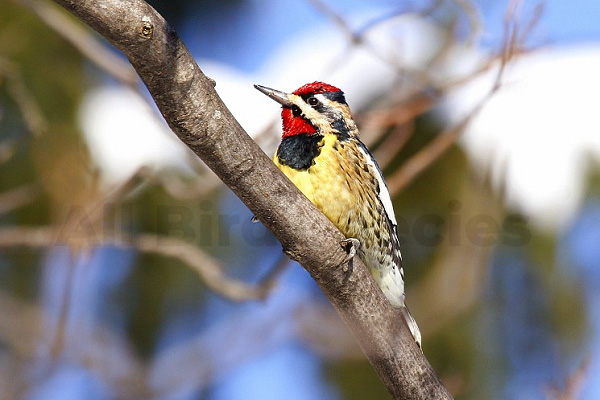
The Yellow-bellied Sapsucker is a fascinating woodpecker species that can be found in the woodlands of North Carolina. Known for its unique feeding habits, this bird plays an important role in the region’s ecosystem.
The Yellow-bellied Sapsucker The species of woodpeckers has a distinct black and white plumage, with a vibrant red crown and throat, often found on the back of their head. This striking appearance makes it easy to identify in the field. It is a medium-sized woodpecker, measuring approximately 8-9 inches in length.
Unlike other woodpeckers that primarily feed on insects and tree sap, the Yellow-bellied Sapsucker has a special taste for tree sap. It creates a series of small holes, known as “sapwells,” on tree trunks to access the sugary sap. These sapwells not only provide nourishment for the woodpecker but also attract other bird species and insects.
“The Yellow-bellied Sapsucker’s feeding behavior can benefit various wildlife species, including hummingbirds, who also enjoy the sweet sap.”
This woodpecker species is migratory, spending winters in the southeastern United States, including North Carolina, and migrating to northern regions during breeding season. It nests in deciduous forests, typically selecting dead or dying trees for its nest cavities.
Male Yellow-bellied Sapsuckers can be quite territorial, defending their feeding and nesting areas from intruders. They communicate with distinct drumming patterns and calls, which can be heard echoing through the forest.
Despite their name, Yellow-bellied Sapsuckers do not have a bright yellow belly but are a species of woodpeckers often found near dead trees. The name actually refers to their yellowish or greenish underparts, which may be difficult to distinguish in the field.
Overall, the Yellow-bellied Sapsucker is an intriguing woodpecker species that contributes to the biodiversity of North Carolina’s woodlands. Its feeding habits and role in attracting other species make it an essential part of the local ecosystem.
8. Red-cockaded Woodpecker

The Red-cockaded Woodpecker, a federally endangered species, holds significant ecological importance in the Southeastern Pine forests, including North Carolina. Its population status, habitat requirements, and ongoing conservation efforts are crucial factors in preserving this unique woodpecker species.
This woodpecker species is characterized by its small size, measuring approximately 7 inches in length, and distinct black and white plumage. However, what truly sets the Red-cockaded Woodpecker apart is the red cockade, a small patch of red feathers located at the male’s crown, often difficult to spot in the field.
The Red-cockaded Woodpecker’s habitat is primarily composed of mature pine forests with longleaf pine and a well-developed understory. These forests offer ideal nesting sites as the woodpeckers excavate cavities in living pine trees that have been weakened by a particular fungus. These excavations, known as cavity trees, provide safe and secure nesting locations for the woodpeckers and other forest-dwelling species.
Conservation efforts for the Red-cockaded Woodpecker primarily focus on habitat restoration and management. Public and private landowners collaborate with government agencies and conservation organizations to implement prescribed fire regimes, promote longleaf pine restoration, and enhance the overall health and resilience of the forest ecosystem. By protecting and restoring suitable habitat, these initiatives aim to secure the future of the Red-cockaded Woodpecker population in North Carolina.
“The conservation of the Red-cockaded Woodpecker is essential for maintaining the ecological balance of the Southeastern Pine forests. Protecting its habitat not only benefits this endangered species but also enhances the overall biodiversity and health of the forest ecosystem.”
Efforts to monitor the population status of the Red-cockaded Woodpecker involve regular surveys and nest box monitoring. These activities provide vital data to assess population trends, breeding success, and overall reproductive health. It helps guide conservation strategies and informs decision-making processes to ensure the long-term survival and recovery of this species, often found in dead tree habitats.
You may want to read about Owls in Massachusetts

